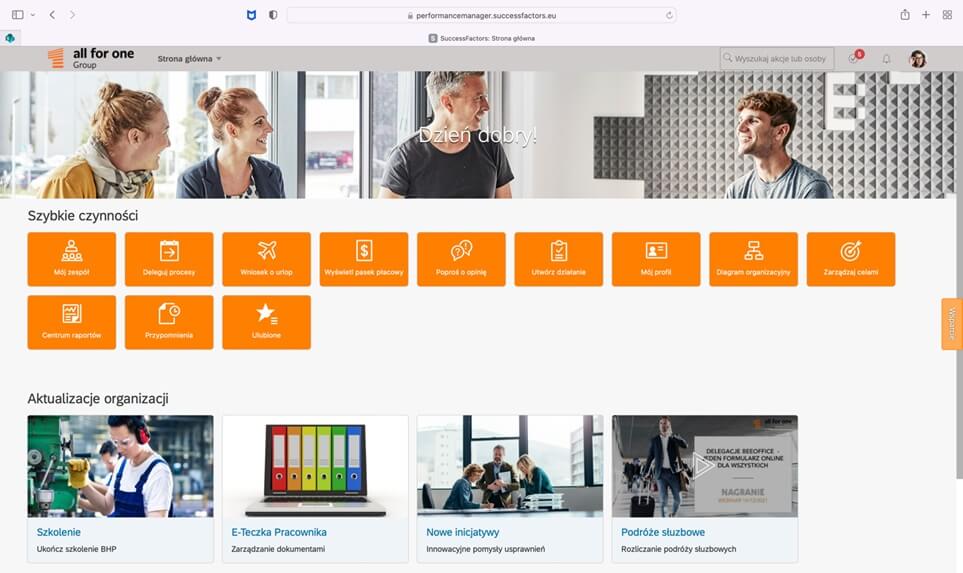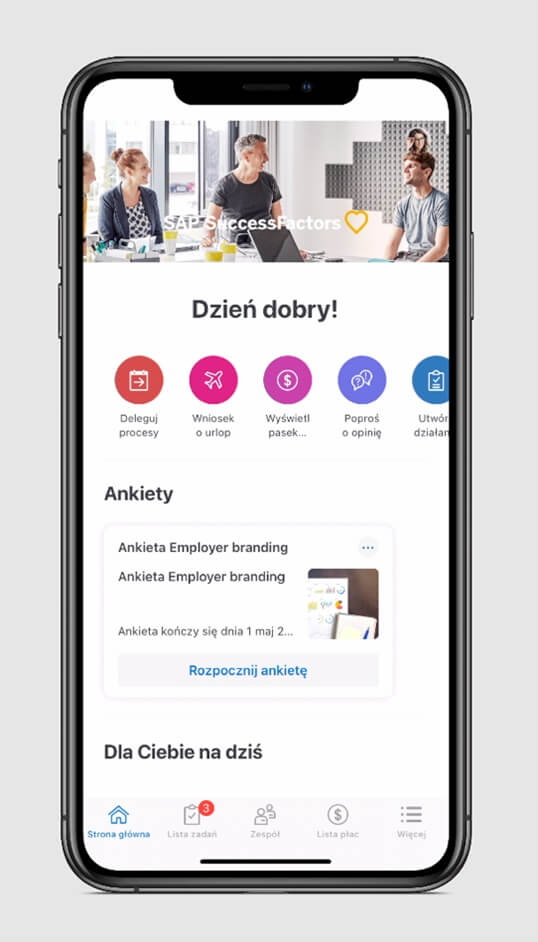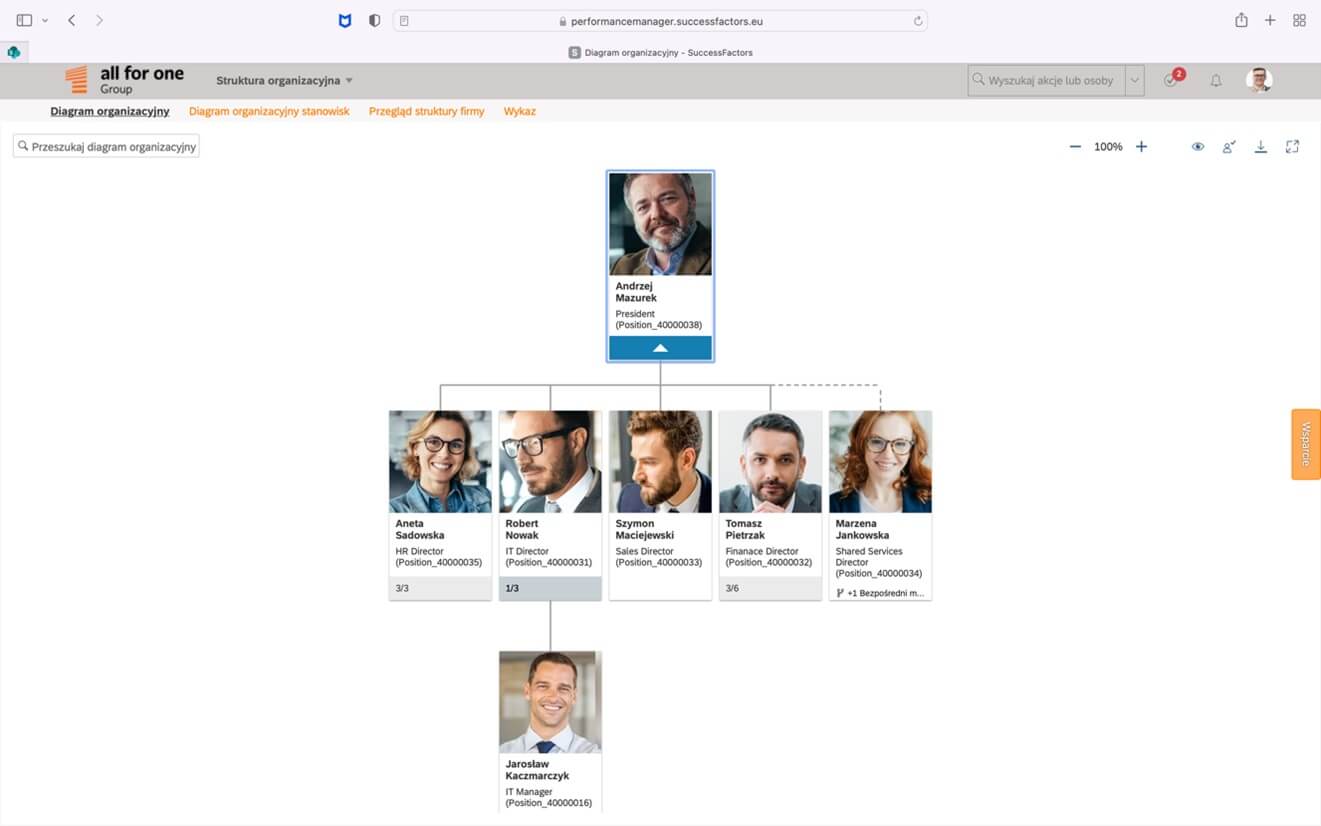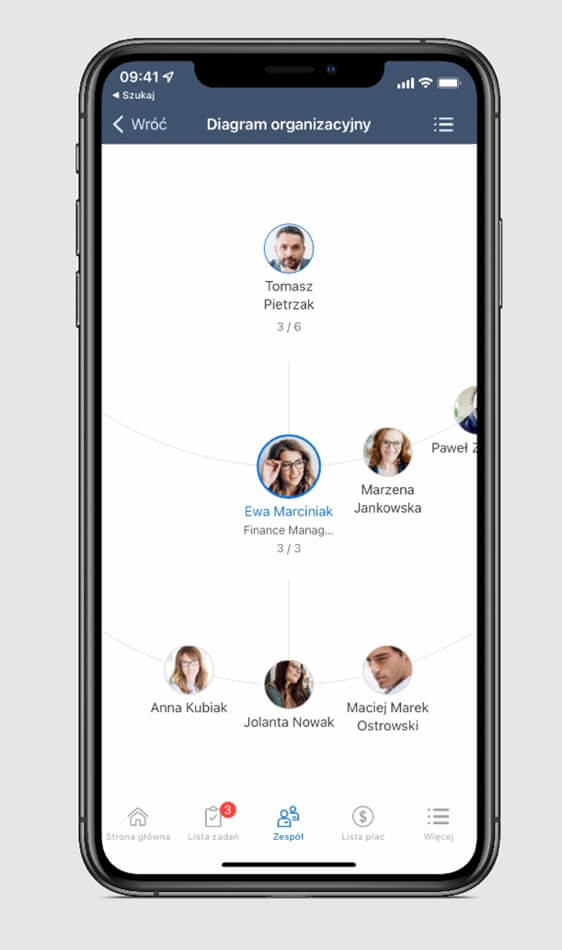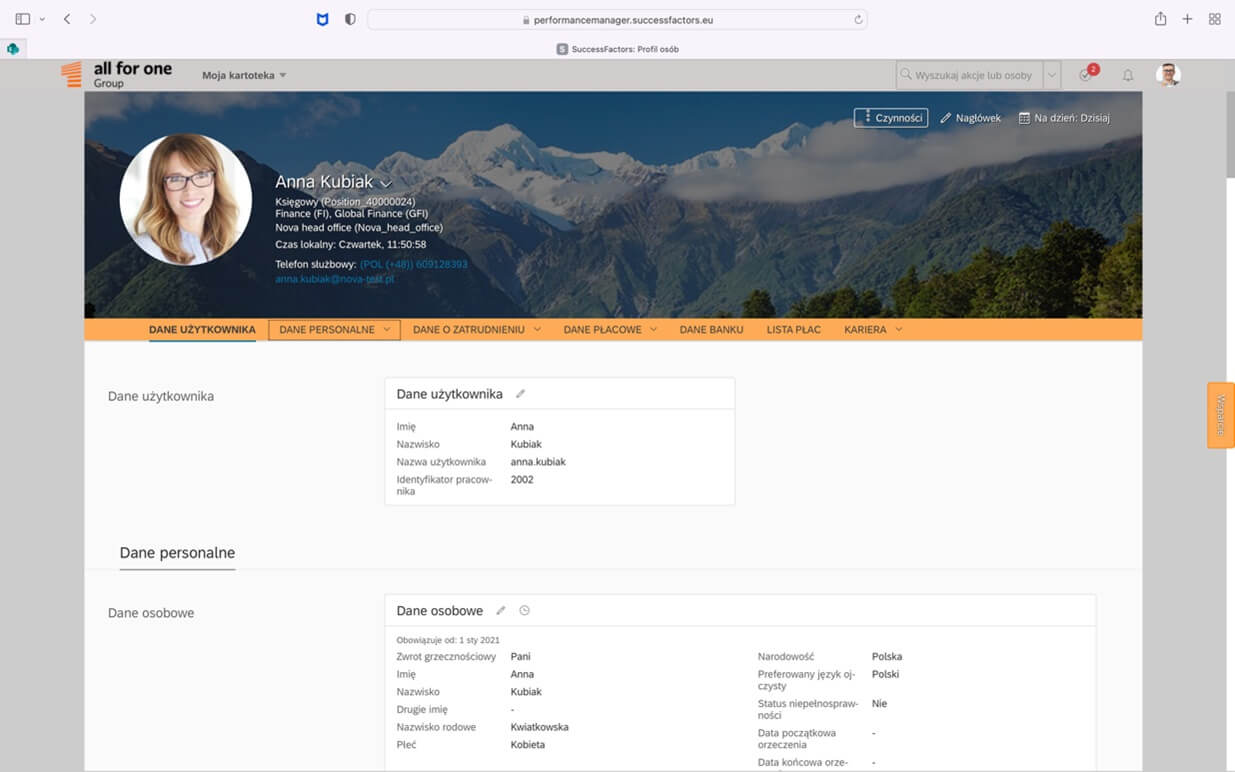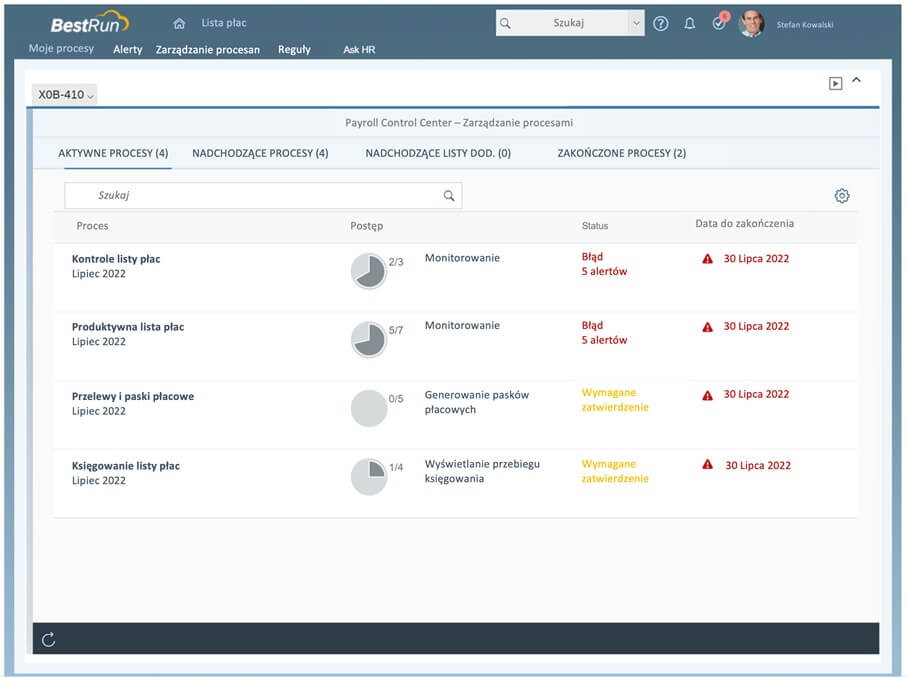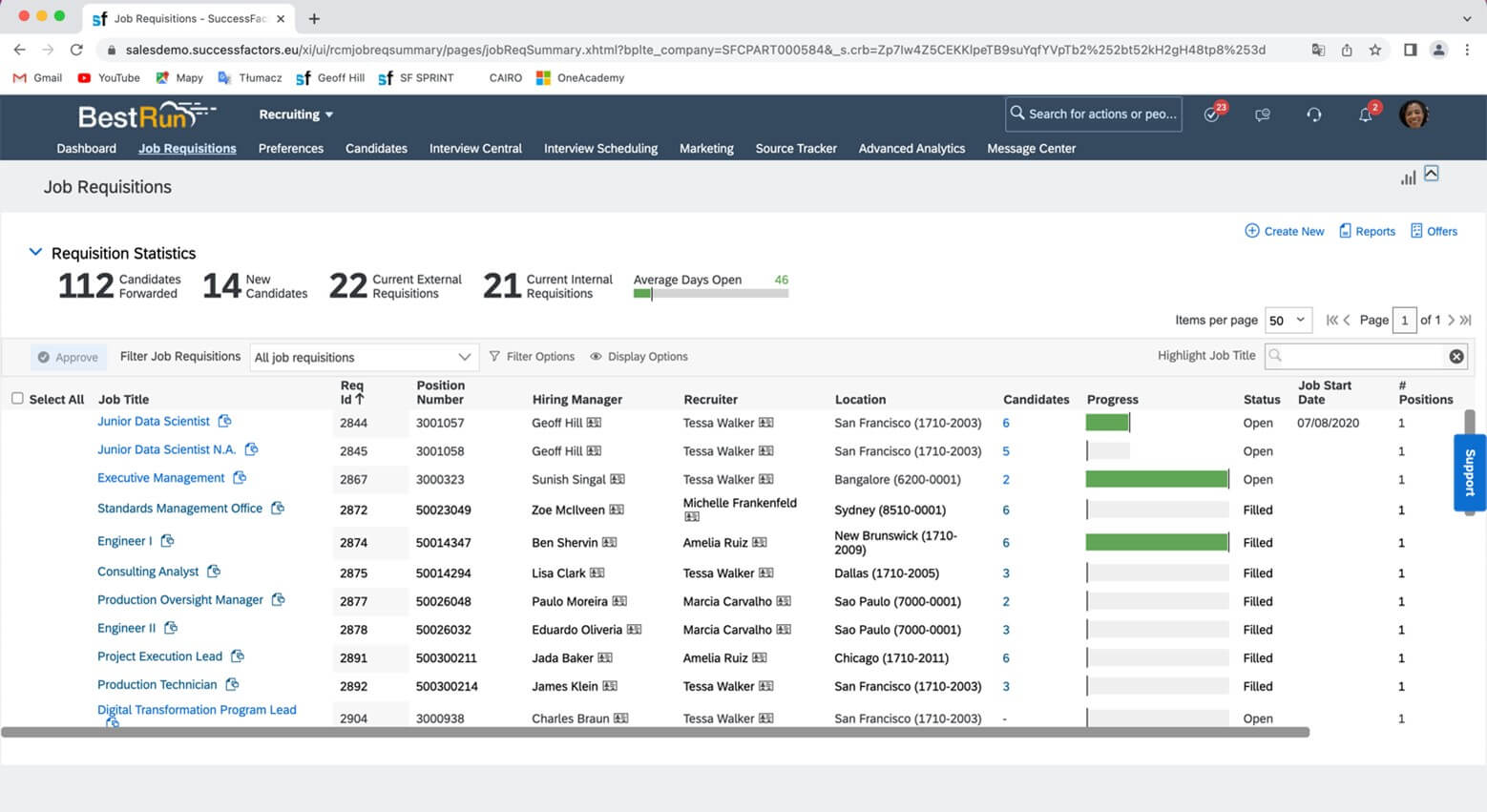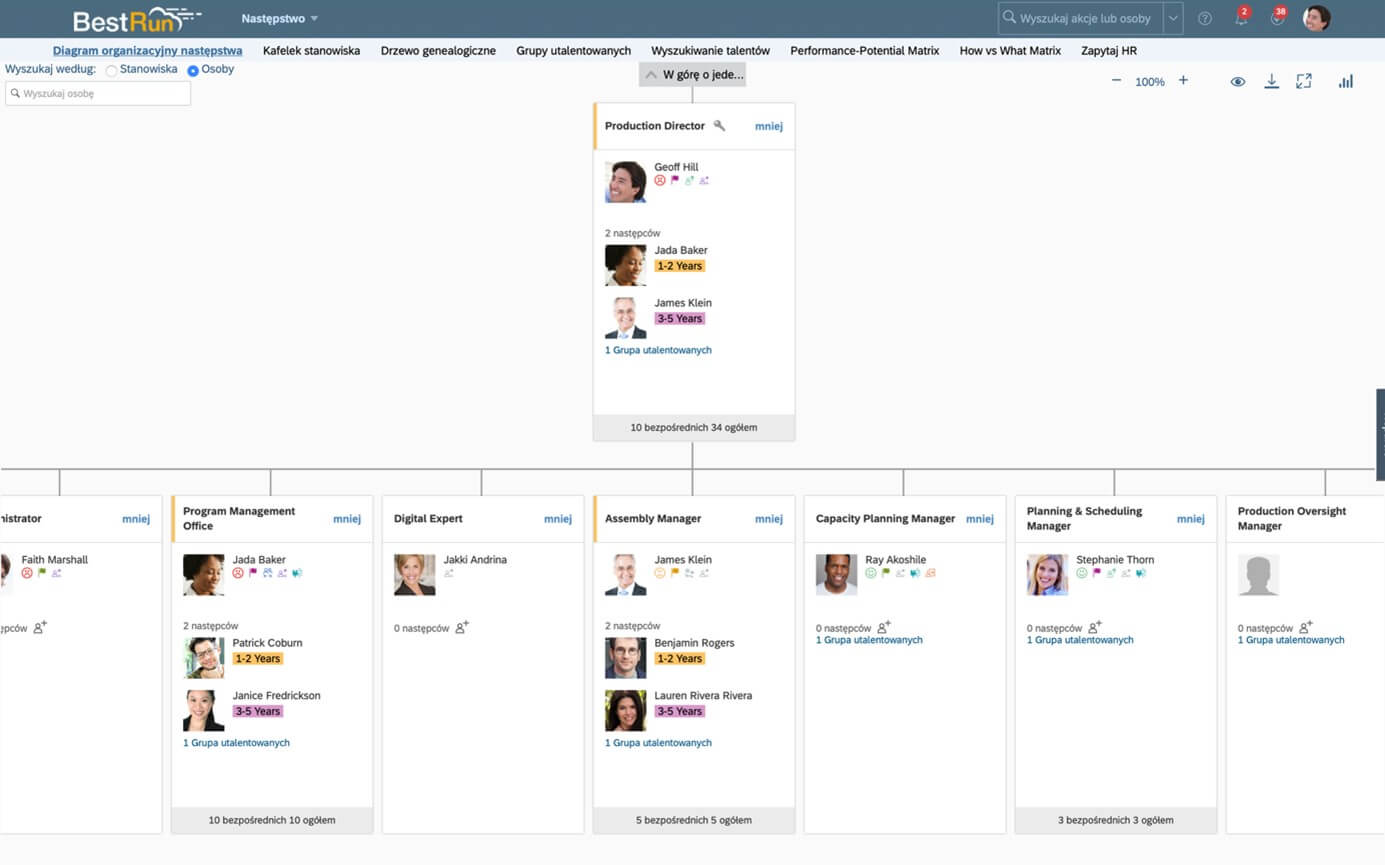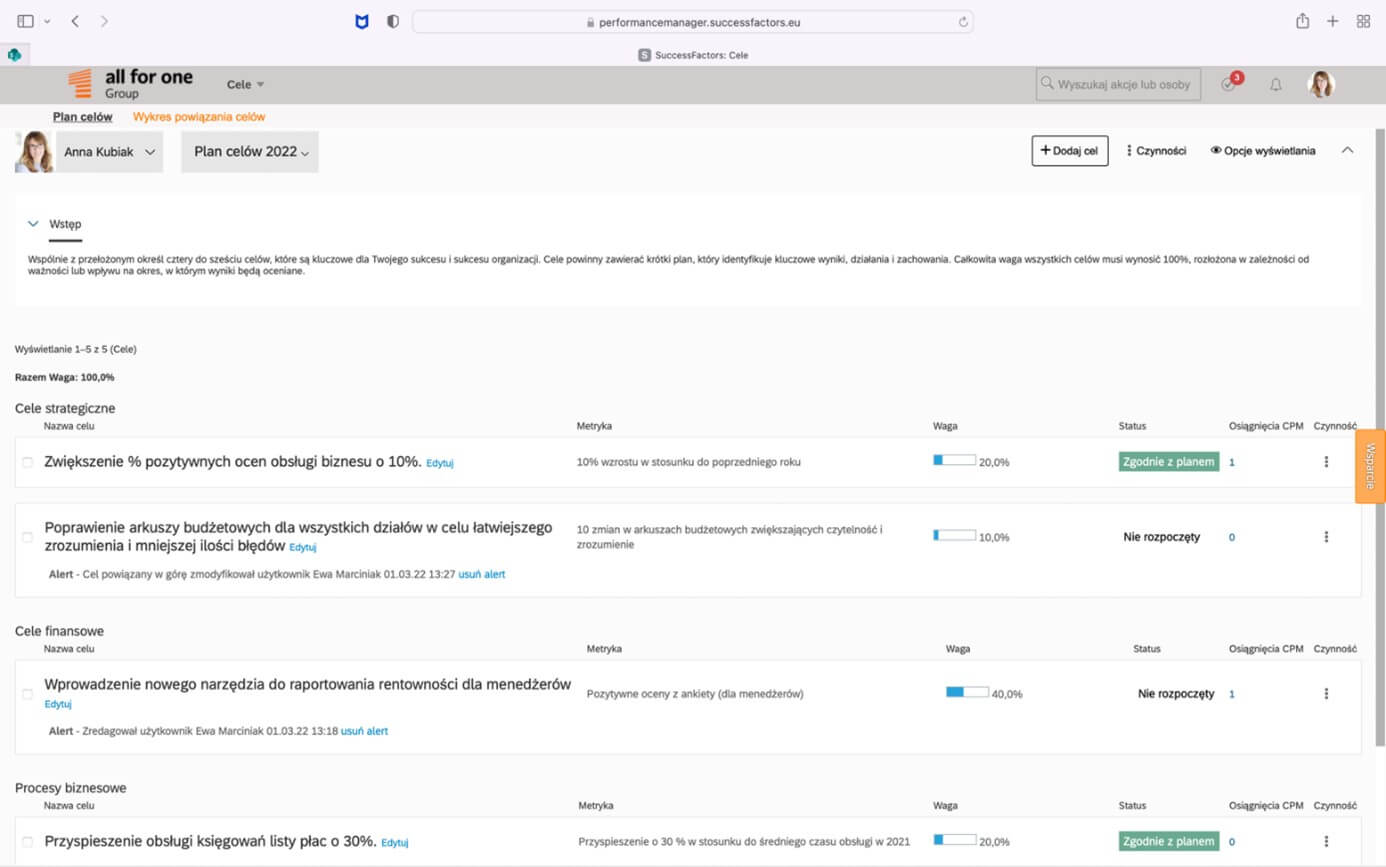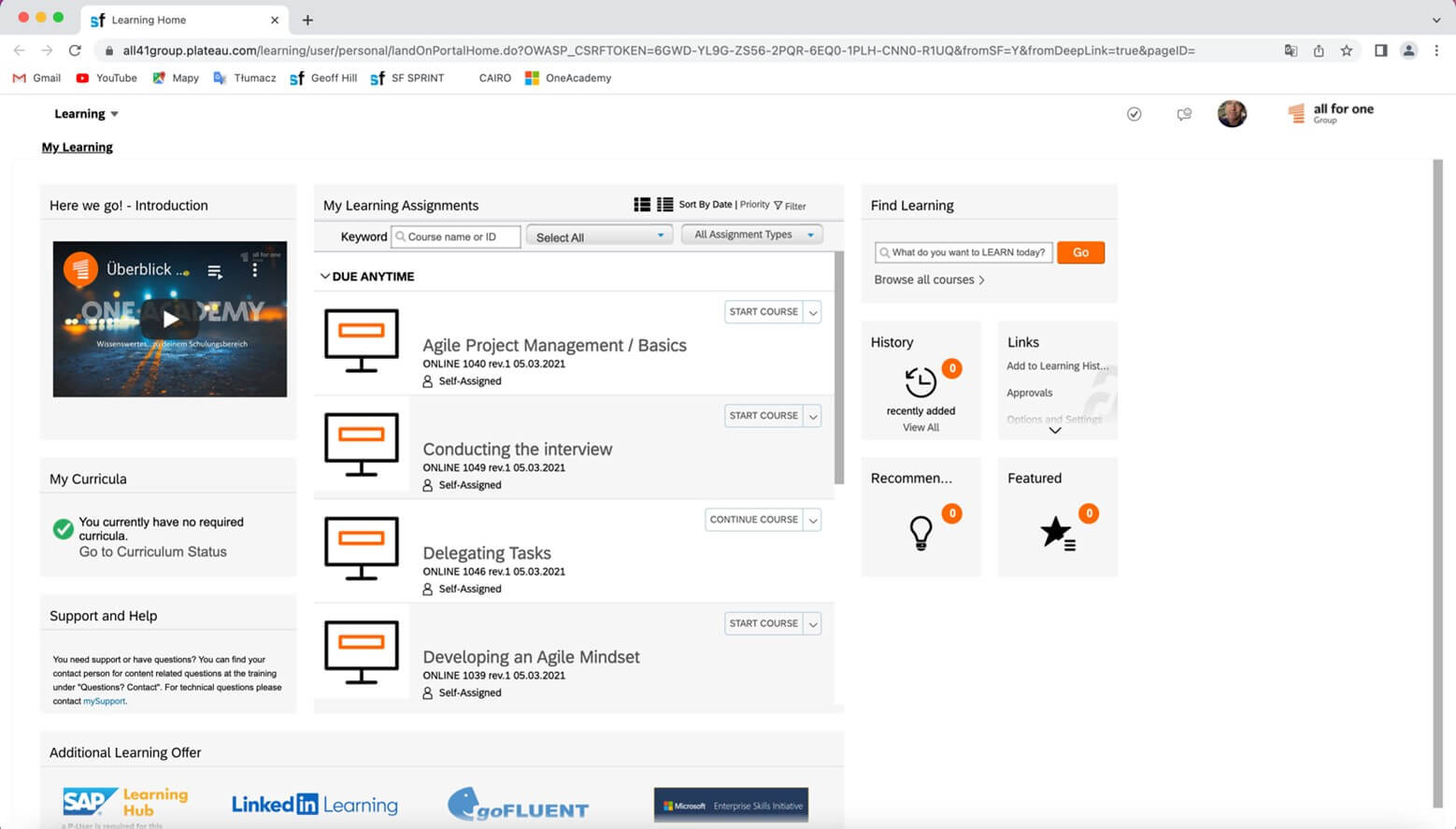SuccessFactors is the first SAP product that can be considered to be a system that meets all requirements and expectations from the users’ point of view. The solution largely focuses on self-service, delegating to employees many activities previously reserved for HR and payroll departments. It also responds to the need for quick and easy access to selected information, e.g. on salaries, payslips, handling HR requests etc.
It is accessible via native applications to any employee from anywhere and on any device. The mobile application has been developed for both Android and iOS platforms. The system draws on the experience of consumer applications in terms of ease of use, screen and button logic and aesthetics (user/employee experience). And, as in these types of applications, SuccessFactors’ developers assume that using the tool should not only be a necessity, but also a pleasure.
And the most important differentiator – employees’ needs are put first. This is also reflected in licensing – a company that decides to use SuccessFactors buys licenses for all employees.
Let’s take a closer look at the key modules of the solution.
SF Employee Central
The heart of SuccessFactors is SAP SF Employee Central (SF EC), a central employee database containing basic personal and organizational data about employees. It allows for the integration of all implemented system functions.
SF EC users are both HR specialists and other employees. Managers have access to selected HR data of a team and can initiate a number of workflow processes (e.g. a request to change an employee’s salary). With SuccessFactors EC, HR processes can be carried out (hiring, change of employment terms, dismissal, suspension, etc.). Our practice shows that most companies – whether migrating from SAP HR or implementing a solution in the greenfield model – start with Employee Central. This module – in a nutshell – is the HR part of the solution. In addition to employee records, it contains employee and manager self-service mechanisms.
As a side note, it is worth mentioning that self-service is the basic premise of this system. Most processes can be implemented in this model, and it is only up to the company to decide how much autonomy it will give its employees.
The Employee Central start screen is configured by the user and may contain shortcuts to the most frequently performed actions and activities (e.g. for an employee – a payslip, a leave request, for an administrator/employee of the HR and payroll department – an organizational structure, a report center). A very useful functionality is the contextual search that allows for quick navigation in the system and finding employee profiles.
If the system is integrated with external solutions (e.g. e-file, surveys, working time management) – they can be accessed from the start screen without the need for a separate login.
The organizational structure can be represented in two ways: a position dependency structure and a position diagram. From the level of the dependency structure, we can easily find a selected employee and perform related actions (e.g., change data, submit an application, refer for medical examinations or training). In turn, the position diagram allows us to define new positions, start the recruitment process, etc.
The system enables different views of the organizational structure to be configured, e.g. by cost centers, branches, departments.
Each employee has access to their profile – a file with data. The ability to edit and change individual data is configurable and depends on the company’s employee self-service policy.
Payroll in SuccessFactors
Two approaches are currently used in payroll accounting. The first one is the use of the SAP HR on-premise payroll system and its integration with SF Employee Central. The second approach is the migration of all processes to the cloud, including payroll – in this case we are talking about the SAP SuccessFactors Employee Central Payroll system.
The SAP SuccessFactors EC Payroll module supports payroll specialists in payroll calculation processes, automating a number of activities that have often been performed manually so far (e.g. settlement of retroactive corrections). The key benefits of using this SF component include shortening the time for preparing lists, reducing the risk of errors and simplifying payroll management processes.
In order to meet the expectations placed on payroll systems today, companies have to make a choice between outsourcing payroll and maintaining full control and correctness of the payroll on their own. SAP SuccessFactors Employee Central Payroll offers the best features of both solutions.
Thanks to the integration of SAP SF EC Payroll with SF EC, you receive the most proven payroll system connected to the next generation HR system.
SAP has re-modeled the payroll processes, providing a new Payroll Control Center (PCC) dashboard. This dashboard allows you to switch from the traditional batch payroll processing model to the model of real-time monitoring of the payroll process, focusing on removing errors rather than searching for them.
Recruitment
SF Recruiting consists of two components: Recruiting Management (RM) and Recruiting Marketing (RMK). Recruiting Management primarily supports the processes inside the organization – the workflow in recruitment and selection of candidates. Recruiting Marketing encompasses what happens externally – its goal is to attract the attention of people whose competencies and skills may be of interest to us, and to establish a long-term relationship with them.
Recruiting Management organizes recruitment processes, supports communication between participants in the information flow and eliminates bottlenecks – we always know the status of the recruitment requirement, the status of the candidate and the task that should be performed, along with the person responsible for it.
For the person responsible for recruitment processes in the company, the central place of the module is a dashboard presenting a list of open recruitments with the positions, a hiring manager, a recruiter, the number of assigned candidates, the process progress, etc. Clear dashboards present statistics on recruitment (including permissions and search filters).
The recruitment process is initiated by submitting an application – this function can be assigned, for example, to the managers of the teams for which recruitment is carried out, or only to recruiters. The application form is configurable. It can include, for example, questions for the candidate with different weights assigned to them (e.g., required, disqualifying).
A useful functionality is the definition of job profiles containing required competencies, skills, experience, etc. Information contained in selected profile blocks can be automatically used to create a recruitment ad. The solution can be integrated with recruitment portals and agencies.
The module provides access to the candidate file, along with the attached documents. From this level, you can communicate with candidates and arrange meetings.
Once the candidate is accepted, the employee onboarding process begins in the company.
Onboarding
Onboarding is the functionality that customers often choose in tandem with Recruitment as a continuation of the process of acquiring new talents. With its help, the supervisor together with the HR department can support the process of onboarding a new employee by, among other things:
- appointing a mentor;
- introducing the subordinate to colleagues;
- pointing out useful documents, training materials or websites (e.g., referrals for medical examinations, training, benefit information, internal policies and procedures, documentation to be completed);
- presenting a plan for the first day of work;
- planning short-term goals.
The functionality – to a limited extent – can be made available to a new employee before the first day of work to facilitate and accelerate onboarding (e.g. a welcome message, other selected information).
The employee is guided through the next steps of onboarding in the new company and has contact with all departments/people involved in this process (a supervisor, a mentor, an HR specialist, IT, etc.).
SuccessFactors – for an employee
- Sample SF start screens (desktop)
- Sample SF start screens (mobile application)
- Organizational structure (desktop)
- Organizational structure (mobile application)
- Employee profile
- The Payroll Control Center dashboard in Employee Central Payroll
- Recruitment specialist dashboard with access to all necessary functions
- Succession and development planning
- Plan of employee goals
- Sample employee training dashboard
Succession & Development
The SAP SF Succession & Development module for succession planning and employee development offers a whole range of functionalities for effective talent management in the company. The system enables the assignment of various types of “talent" attributes to employees, such as eligibility for the talent pool, the risk of leaving the company and its potential impact on the organization, the employee’s readiness for a senior position, etc. A special talent search engine (Talent Search) is provided for planners to help identify potential successors for key positions.
Companies seeking to reduce the risk of vacancies plan potential successors for selected key positions. The succession functionality in SuccessFactors allows for successors to be searched for vacant positions or those that will soon be vacant (e.g., due to a planned promotion or the departure of an existing employee).
The search is done in a straight line based on the organizational structure. In addition – using machine learning tools – candidates are selected from among other people in the organization on the basis of many “talent" attributes, only indirectly related to the requirements of the vacant position and previous employment record.
The functionality includes a view for analyzing the impact of promotions on the organizational structure (a domino effect).
The solution enables the creation and management of talent pools.
Employee development is a good example of the extensive use of self-service functions. Each employee has access to the Development tab, which contains information about the current role and required competencies. From this level, they can add new goals related to improving competencies to their development plans.
A feature appreciated by employees is the ability to add new roles that they are interested in. The system itself can offer them certain roles and determine the degree of fulfillment of the criteria for their performance. On this basis, the employee can plan their development goals, training, etc.
Another interesting feature is applying for a mentoring program – both as a participant and as a mentor.
Performance and goals management
The SF Performance & Goals module supports goal management, employee evaluations and ongoing coaching of staff by maintaining constant communication between the manager and the team.
The Goals Management (GM) component supports in particular:
- defining goals,
- assigning goals to employees,
- cascading goals,
- managing the relationships between directly interdependent goals.
It is possible to define individual goals for specific employees, and team goals. It is a good practice to enable employees to edit goals – if only to determine the status of their achievement.
Goals and their achievement serve as a basis in the employee evaluation process. Within the SuccessFactors Performance Management (PM) component, it is possible to model various evaluation forms. These forms can refer to the goals assigned to employees for achievement within a fixed evaluation period. Forms support the processes of reviewing and monitoring of the goal achievement progress. Customers can define any schemes of evaluation document flow. For example, a document path might include: employee self-evaluation, manager’s evaluation, summary meeting, evaluation approval.
If the company uses the compensation management module, the results of the employee evaluation can be taken into account when planning compensation.
Another type of goals that can be set for employees are development goals. They can be defined by the employee together with the supervisor or for a wider group of people (e.g. development goals for the talent pool). These are goals that are not subject to evaluation, and their importance and role depend on the philosophy of talent management in the organization, for example, they can be used to plan the career development of an employee or a group of people in the company.
Compensation management
Compensation management is a module that is gaining popularity. Its central part is a sheet for planning compensations for a selected period, containing a defined workflow, budgets, compensation ranges per position, suggestions for compensation changes based on employee evaluations, bonuses, etc.
Training courses
The SF Learning module includes all the necessary functionalities for intuitive training planning, budgeting, billing and evaluation. However, it is particularly noteworthy that in SF Learning, employees are by definition participants in the training management process. Each of them has his/her own account on the training portal, and the arrangement and scope of information presented can be personalized for each of them.
The employee panel consists of interactive “tiles", which present the most important information in a condensed way. They include: a list of training courses currently assigned to an employee, a list of completed courses, a tab of favorite activities, a list of recommended training courses, a search engine and other.
Easy access to the training database, the ability to integrate with external e-learning platforms, training planning, the ability to assign training to oneself and other employees, recommendations and other tools allow for the pace of development to be adjusted to the employee.
This is a brief overview of the basic SFSF modules. The portfolio of human capital management solutions is constantly expanded with new solutions, such as People Analytics for reporting or Qualtrics for employee experience management. The latest novelty in the SAP portfolio for HR is the Opportunity Marketplace, a functionality that serves as corporate social media.


